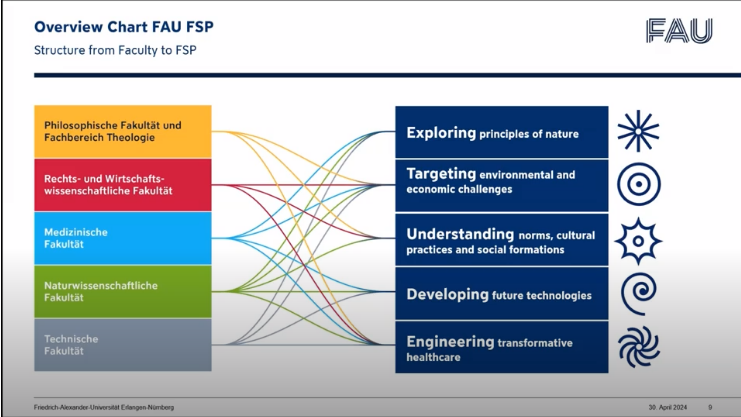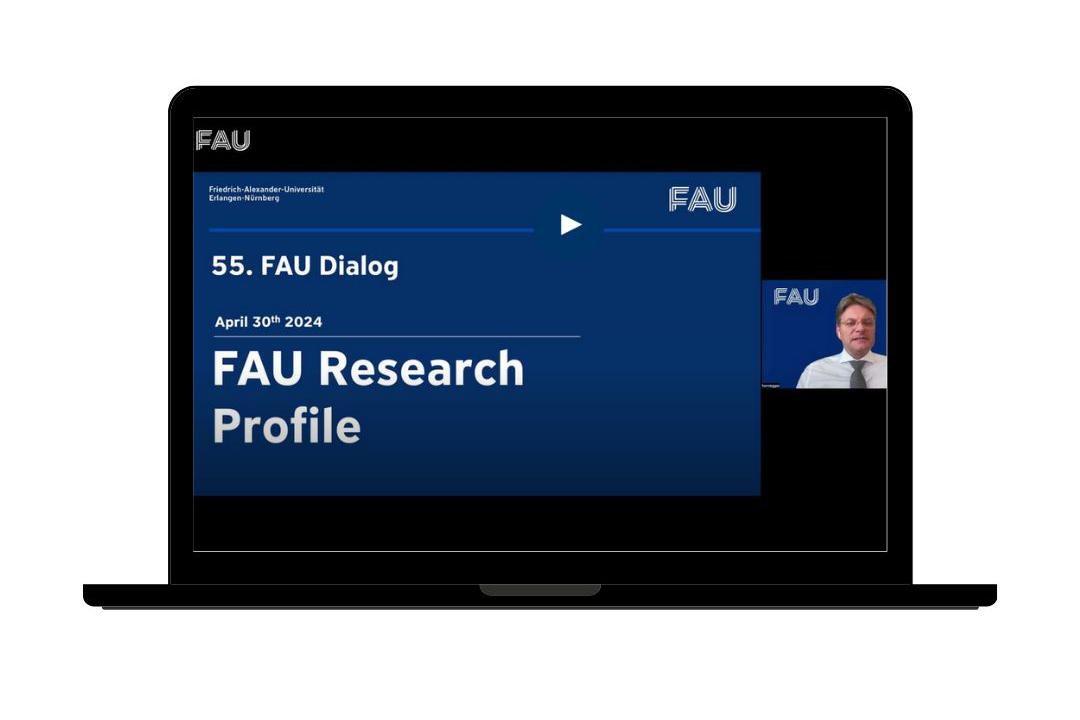Key research priorities redefined
The FAU Senate has defined 5 key research priorities for the University’s research profile. They serve as a framework for the work of all FAU members. Vice President Research, Prof. Dr. Georg Schett, explains the origins of the new research priorities.
Why the redefinition of FAU’s key research priorities was overdue
Why did the Senate draw up new key research priorities?
Research is always dynamic. It’s no coincidence that our motto at FAU is “Moving knowledge”. As the years go by, circumstances change, new challenges arise and new technologies come to the fore. And last but not least, people at a university come and go who have different interests and passions. At the same time, over recent years we have gained the impression that our previous research priorities were not suitable to reflect the complex research landscape of our university which offers the entire spectrum of academic disciplines. Under the leadership of Professor Anja Bosserhoff, our Senate, whose duties include defining key research priorities at FAU, decided to revise the existing research priorities.
What was behind the decision to revise the research priorities?
During intensive discussions we decided to move away from our very focused key research priorities towards an inclusive structure of key areas. These new key research priorities, five in total, serve as the basis for our research profile. On the basis of this network of interwoven key research priorities, and through raising funding for research, appointing researchers of an excellent caliber, strengthening certain areas, and promoting collaborative research, hubs are formed that then grow and gain in significance. These correspond to our FAU Profile Centers and FAU Research Centers that are all very different, but fulfill clear criteria such as having a defined number of collaborative projects within a center.
The five research priorities are: “Exploring the principles of nature”, “Targeting environmental and economic challenges”, “Understanding norms, cultural practices and social formations”, “Developing future technologies” and “Engineering transformative healthcare”. That sounds like one research priority for each faculty….
This may be the case at first glance. But if you look more closely it becomes clear that the research priorities apply across all faculties, as was the case with the previous research priorities as well. Just now we talked about a network, and such a network would not exist without interdisciplinary teamwork. The diagram clearly shows how the expertise in the faculties is integrated into the key research priorities. For example, it becomes clear that the research priority “Targeting environmental and economic challenges” can only be tackled by all faculties working in close collaboration: science and medicine, economics and social sciences are all involved in such an important task.

Why did the Senate choose exactly this wording? The gerund form, which is when you form a noun from a verb in English, wasn’t used in the previous key research priorities.
There are reasons for this – both in terms of content and language use. Firstly, the language: When we changed our motto from “Knowledge in motion” to “Moving knowledge” in 2021, this was due to our desire to emphasize the active nature of research. Knowledge does not “move” by itself; it is the result of hard work and the passion that researchers invest in their field. We want to focus more on this “doing” in our key research priorities, which is why we used the verbs “to explore”, “to target”, “to understand”, “to develop” and “to engineer” to form the gerunds. And then there’s the content: These five verbs sum up exactly what researchers do. This is a good description of life in research, I think. We thought this play with words was appealing and apt.
 55. FAU Dialog “Research Profile”
55. FAU Dialog “Research Profile”
The key research priorities explained in a video:
What sort of impact do the key research priorities have on day-to-day operations at FAU?
They determine what we do every day, not just in research, but also in teaching, in developing talent at FAU and in our relationships with people and organizations outside the University. They are, if you like, the guidelines for forming the strategic profile of our FAU. Of course, some people at FAU may have liked a somewhat sharper, catchier profile that would differentiate us even more in terms of content, and this is understandable. But if we consider ourselves a university which offers the entire spectrum of academic disciplines and assume that this attribute shapes our profile, then this new wording is the most plausible means of doing so. We are making it clear that all research and achievements at our University contribute to the FAU brand.
